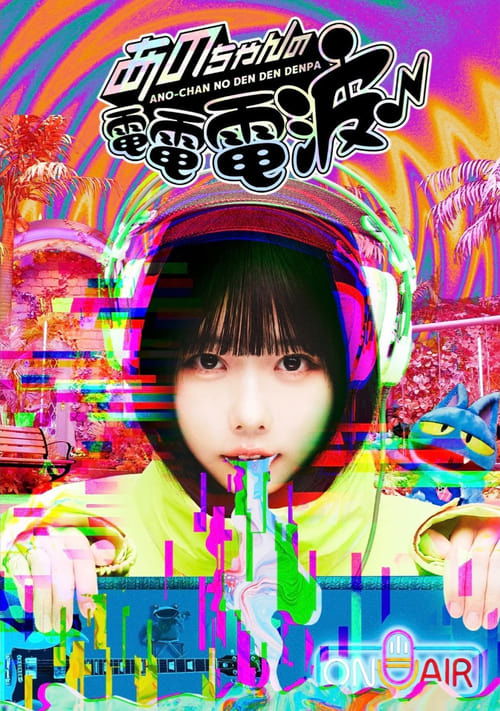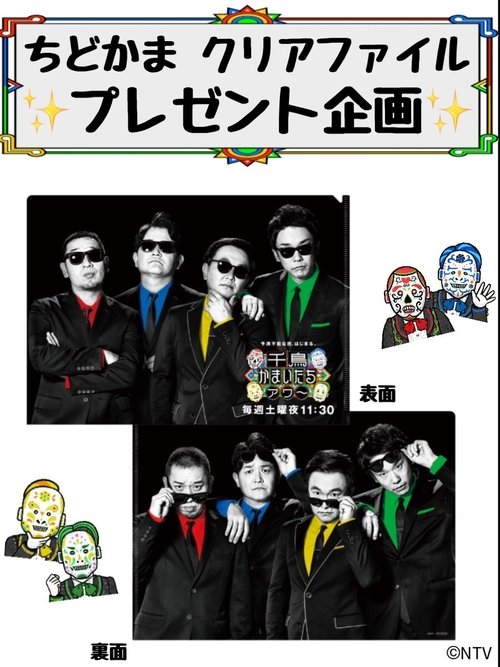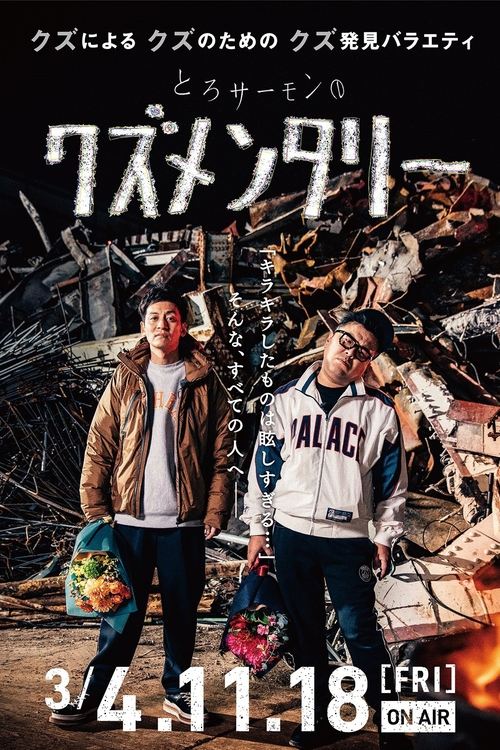
Ask Your Own Question
What is the plot?
In the opening scene of "Makubes no 23 ji," we are introduced to the protagonist, Kenta, a young man living in a dystopian society where people are categorized based on their abilities and contributions to society. Kenta is a low-ranking individual, struggling to find his place in a world that values productivity above all else. He works in a factory, where he is often belittled by his superiors. The atmosphere is grim, filled with the sounds of machinery and the oppressive presence of overseers.
As Kenta navigates his daily life, he discovers a hidden underground group known as the "Rebels," who oppose the oppressive regime. The leader of the Rebels, a charismatic woman named Yumi, approaches Kenta after noticing his dissatisfaction with the system. She invites him to a secret meeting, where they discuss their plans to overthrow the government. Kenta is hesitant but feels a spark of hope for a better future.
During the first Rebel meeting, Kenta learns about the government's use of advanced technology to control the population. The Rebels plan to hack into the central system to expose the truth and rally the citizens. Kenta is inspired by their passion and decides to join their cause, motivated by a desire for freedom and a better life for himself and his family.
The group begins to train Kenta in various skills, including hacking and combat. He struggles at first, feeling inadequate compared to the more experienced members. However, with Yumi's encouragement, he gradually gains confidence. A pivotal moment occurs when Kenta successfully completes a training exercise, earning the respect of his peers and solidifying his commitment to the cause.
As the Rebels prepare for their first major operation, they gather intelligence on the government's central facility. Kenta is assigned to work with a tech expert named Ryo, who teaches him how to navigate the security systems. During their late-night sessions, Kenta and Ryo bond over their shared frustrations with the regime, and Kenta begins to see Ryo as a brother figure.
The night of the operation arrives, and the Rebels infiltrate the central facility. Tension fills the air as they move stealthily through the darkened halls, using their training to avoid detection. Kenta feels a mix of fear and exhilaration as they reach the main control room. However, just as they begin to execute their plan, an alarm is triggered, and chaos ensues.
In the ensuing panic, Kenta and Yumi work together to fend off security personnel. Kenta's heart races as he fights for his life, driven by the adrenaline of the moment. They manage to access the central system, but the government's forces are closing in. Yumi makes the decision to stay behind and hold off the guards, urging Kenta to escape with the data they've gathered.
Kenta hesitates, torn between his loyalty to Yumi and the mission. Ultimately, he chooses to flee, carrying the data that could expose the regime. As he escapes, he hears Yumi's voice urging him to keep fighting, which fuels his determination. He narrowly avoids capture, using the skills he learned from the Rebels to navigate the facility's security.
Once outside, Kenta reunites with the remaining Rebels, who are devastated by Yumi's sacrifice. They regroup and begin to strategize their next move, knowing they must act quickly to release the information to the public. Kenta feels a deep sense of loss but is resolved to honor Yumi's memory by continuing the fight.
The Rebels launch a campaign to disseminate the data, using underground channels to reach the citizens. Kenta takes on a leadership role, driven by a newfound sense of purpose. He faces challenges as the government retaliates, cracking down on dissent and attempting to silence the Rebels. Kenta's resolve is tested as he witnesses the suffering of his fellow citizens, but he remains steadfast in his belief that change is possible.
In a climactic confrontation, the Rebels organize a large-scale protest, drawing thousands of citizens who are inspired by Kenta's leadership. The government responds with force, leading to a violent clash between the two sides. Kenta finds himself in the thick of the chaos, fighting not just for his life but for the future of his society.
During the confrontation, Kenta faces off against a high-ranking government official who embodies the oppressive regime. The fight is intense, with Kenta drawing on all his training and the memories of his fallen comrades. In a moment of desperation, he manages to outsmart the official, delivering a decisive blow that symbolizes the struggle against tyranny.
As the dust settles, the citizens begin to rally around Kenta, inspired by his bravery. The government, facing mounting pressure and public outrage, starts to crumble. Kenta stands amidst the crowd, feeling a mix of triumph and sorrow for those who sacrificed everything for this moment.
In the final scenes, Kenta reflects on the journey he has taken, from a low-ranking worker to a leader of a movement. He vows to continue fighting for a better future, knowing that the struggle is far from over. The series ends on a hopeful note, with Kenta and the Rebels planning their next steps, united in their quest for freedom and justice.
What is the ending?
In the ending of "Makubes no 23 ji," the main character, Kenta, confronts the truth about his past and the choices he has made. He faces the antagonist, who represents the darker aspects of his own psyche. The climax leads to a resolution where Kenta finds redemption and a sense of closure, ultimately choosing to embrace his future rather than be haunted by his past. The other characters, including his friends and family, also find their paths, leading to a bittersweet but hopeful conclusion.
As the final episodes unfold, the tension builds around Kenta's internal struggle. The scene opens in a dimly lit warehouse, where Kenta stands alone, grappling with the weight of his decisions. Flashbacks flicker in his mind, showing moments of joy and pain, highlighting the duality of his experiences. The air is thick with anticipation as he prepares to confront the antagonist, who has been a shadow over his life.
In the next scene, Kenta's friends gather outside the warehouse, their expressions a mix of concern and determination. They have been supporting him throughout his journey, and their loyalty is palpable. As they wait, they share quiet conversations, reflecting on their own growth and the bonds they have formed. This moment emphasizes the theme of friendship and support in overcoming personal demons.
Back inside the warehouse, Kenta finally faces the antagonist. The confrontation is intense, filled with emotional dialogue that reveals the antagonist's motivations and Kenta's fears. The antagonist taunts Kenta, trying to draw him back into despair, but Kenta stands firm, fueled by the memories of his friends and the love of his family. The struggle is not just physical but deeply emotional, as Kenta battles against the darkness within himself.
As the fight reaches its peak, Kenta recalls a pivotal moment from his past--a time when he chose to turn away from a destructive path. This memory empowers him, and he finds the strength to overcome the antagonist. The scene is charged with energy, the sound of their struggle echoing in the empty space, symbolizing Kenta's fight for his own identity and future.
With a final surge of determination, Kenta defeats the antagonist, who crumbles into a shadowy figure, representing the fears and regrets that have haunted him. As the dust settles, Kenta stands victorious but exhausted, a mix of relief and sorrow washing over him. He realizes that while he has won this battle, the journey of self-discovery and healing is ongoing.
The final scenes shift to Kenta reuniting with his friends and family outside the warehouse. Their faces light up with joy and relief, and they embrace him, celebrating his victory. Kenta's eyes glisten with tears, not just of happiness but of the weight he has lifted from his shoulders. He acknowledges the importance of their support, understanding that he is not alone in his journey.
In the closing moments, the camera pans out, showing Kenta and his friends walking away from the warehouse together, the sun rising in the background. This symbolizes a new beginning, a fresh start for Kenta as he steps into the future with hope. The series ends on a note of optimism, highlighting the themes of redemption, the power of friendship, and the importance of facing one's past to embrace a brighter tomorrow.
Each main character finds their resolution: Kenta emerges stronger and more self-aware, his friends reaffirm their bonds, and the antagonist, though defeated, serves as a reminder of the struggles they all face. The ending encapsulates the essence of the series, leaving viewers with a sense of closure and the belief that change is possible.
Is there a post-credit scene?
In "Makubes no 23 ji," there is indeed a post-credit scene that adds an intriguing layer to the narrative.
As the credits roll, the screen fades to black before transitioning to a dimly lit room filled with various monitors displaying different locations around the city. The camera slowly zooms in on one particular screen, which shows a close-up of a mysterious figure shrouded in shadows, their face obscured. The figure is seated at a desk cluttered with papers and digital devices, suggesting a high level of organization and intent.
The atmosphere is tense, underscored by a low, pulsating soundtrack that heightens the sense of anticipation. The figure leans forward, revealing a glint of an object in their hand--a small, intricately designed device that resembles a key. As they manipulate it, a holographic projection of the main characters from the series flickers to life above the desk, displaying their recent actions and decisions.
The figure's voice, distorted and cold, breaks the silence, hinting at a larger plan that involves the protagonists. "They think they are safe," the figure says, a smirk evident in their tone, "but the game is just beginning."
The scene ends with a quick cut to black, leaving viewers with a sense of foreboding and curiosity about the figure's identity and their intentions, effectively setting the stage for potential future conflicts and developments in the storyline. This post-credit moment serves as a tantalizing tease, inviting speculation and excitement for what lies ahead in the series.
What is the significance of the number 23 in the series?
The number 23 serves as a central motif throughout 'Makubes no 23 ji,' symbolizing the interconnectedness of the characters' fates and the mysteries they unravel. It appears in various contexts, such as the time of day when pivotal events occur, and is linked to the protagonist's journey of self-discovery.
How does the character of Haruto evolve throughout the series?
Haruto begins as a disillusioned young man, burdened by the expectations of his family and society. As the series progresses, he confronts his fears and insecurities, leading to moments of profound self-reflection. His interactions with other characters, particularly his mentor, push him to embrace his true passions and ultimately redefine his identity.
What role does the mysterious artifact play in the plot?
The mysterious artifact, discovered early in the series, acts as a catalyst for the unfolding events. It possesses unique properties that challenge the characters' understanding of reality and time. As they delve deeper into its origins, it becomes a source of conflict, revealing hidden truths about their pasts and the world they inhabit.
How does the relationship between Haruto and Aiko develop?
Haruto and Aiko's relationship begins with a tentative friendship, marked by shared experiences and mutual support. As they face external challenges together, their bond deepens, evolving into a romantic connection. Their emotional struggles and vulnerabilities are explored, highlighting the complexities of love amidst chaos.
What are the motivations behind the antagonist's actions?
The antagonist, driven by a desire for power and control, believes that the artifact can grant them the ability to reshape reality. Their backstory reveals a tragic past filled with loss and betrayal, which fuels their obsession. This complexity adds depth to their character, making them a formidable foe for Haruto and his allies.
Is this family friendly?
"Makubes no 23 ji," produced in 2021, is a series that explores complex themes and emotional narratives. While it has moments of humor and warmth, there are several aspects that may be considered objectionable or upsetting for children or sensitive viewers.
-
Emotional Turmoil: The characters often experience deep emotional struggles, including themes of loss, betrayal, and existential crises, which may be intense for younger audiences.
-
Conflict and Tension: There are scenes of interpersonal conflict that can escalate into heated arguments or confrontations, showcasing the darker sides of human relationships.
-
Mature Themes: The show delves into topics such as mental health, societal pressures, and the impact of past traumas, which may be difficult for children to fully understand or process.
-
Visual Imagery: Some scenes may contain visual elements that are unsettling or evoke strong emotional responses, such as depictions of despair or isolation.
-
Mild Language: There are instances of mild profanity or harsh language that may not be suitable for younger viewers.
Overall, while "Makubes no 23 ji" offers rich storytelling and character development, its emotional depth and mature themes may not be appropriate for all audiences, particularly children or those sensitive to such content.
























